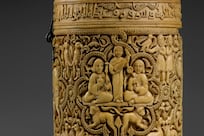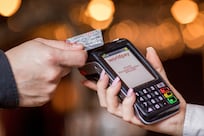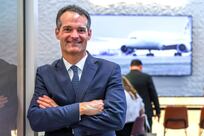Niall Sallam founded Elevision Media with his brother and two other partners in July 2011. The Dubai-based company runs tailor-made advertisements on screens inside elevators. A little more than a year ago, Elevision raised US$1 million from investors and signed a deal to place screens in 68 elevators and 12 public places in the Dubai International Financial Centre. Here, Mr Sallam describes how the company has continued to grow over the past year.
We checked in with you in October last year. How are things going?
A year ago, we had 34 towers signed but not all the screens were installed. Today we are up to 82 towers. The most notable milestone was signing the agreement with Dubai Properties Group [DPG], which includes all the JBR residential towers as well as Business Bay executive towers. Those are fairly high-profile towers that really expanded our reach.
How are ad sales going?
With those two particular groupings [JBR and Business Bay] we’ve certainly reached a critical mass now. Once those towers are fully installed [with screens] which will be at the end of November we will be reaching about 75,000 daily viewers. We are starting to get some really good clients: in telco, Etisalat has been a very regular customer of ours; with auto we’ve had BMW, Cadillac; in banking — HSBC, Deutsche Bank; Sony, Blackberry, Huawei, Media One Hotel, Evian, AIG Insurance. Even fashion brands are starting to take notice: Gucci, Thomas Pink, St John. Things are really shaping up.
Do you provide content for your customers?
We do have an in-house animation team; I wouldn’t say create [ads] from scratch but we certainly amend content. Because our medium is new and because our screen sizes are [irregular] and because there is no audio, more often than not we will take their creative assets — print they are using for a magazine, billboards, a TV spot or online banners — and we’ll add some flash animation, cut up the editing to be a little bit more succinct. Each ad is 15 seconds in duration and we typically run that on a three-minute loop which supports an inventory of 12 advertisements. You want the ads to be long enough that there is a clear message and the point can be driven home; but you need them to be short enough as well that the people in the lift will get the whole message.
What kind of feedback have you had from the towers’ residents and occupants?
We try to have a very community-driven content strategy. In the morning on the way to work you get a quick blurb about who won the football match, what’s happening in and around your neighbourhood — some art shows, some events. We know lot of people in the communities that have our screens in and we are always getting positive feedback. Because our system is quite technically advanced we try to tie in instagram and Twitter. With the DIFC, for example, our screens have a permanent space that holds the DIFC Twitter application. So when the DIFC tweets something it automatically goes across all 72 screens. We are doing something there as well with instagram — photo of the day — and we are actually near to rolling it out on the rest of the network as well. You take a photo on instagram and you hashtag it DIFC, for example. If DIFC then likes that photo on their account then it goes across all the screens. Everyone likes to see their photo in the public domain. It gets people involved, it really has that engagement factor ,it gets the community into the network and is more than just an advertising screen.
Have you plans to expand beyond Dubai?
We are going to enter Abu Dhabi probably nearing the end of this quarter. By December we can start moving into our first building there. We are in late stage negotiations but I am not really at liberty to say at this point, as nothing is signed, sealed or delivered yet. Saudi and Qatar are in the long- term plans — we would probably be looking at end of year next year or start of 2015. In the region it’s very relationship-based and we are fostering those relationships now and having those early discussions now. Our immediate plan is to build up Abu Dhabi as quickly as we can, get some solid footing there and then enter the other jurisdictions.
How will you fund this next stage of growth?
We’re reaching operational profitability, so in terms of revenues we are optimistic that we can probably expand from this point by internally self-funding through revenues from ad sales. If we take on a large project — for example, the DPG project with 40 towers — there may be a need to raise some capital. We have a great group of investors who are happy to reinvest. Options are there if we need them. In terms of entering new jurisdictions like Saudi or Qatar that might be time when we look for some more investment.
It seems the business has become successful quite quickly. Would you agree?
We’ve been at it for about two-and-a-half years now. Certainly the first 12 months were challenging. When you are approaching property owners and landlords and asking them to partner with you when you’re a start-up and you have no track record it’s difficult. Because we are in every corner of Dubai now — from the premium residential towers to the premier commercial towers — we are very visible, and people like it. So when we are approaching clients, property partners, advertisers [they] look at that.
lgutcher@thenational.ae





